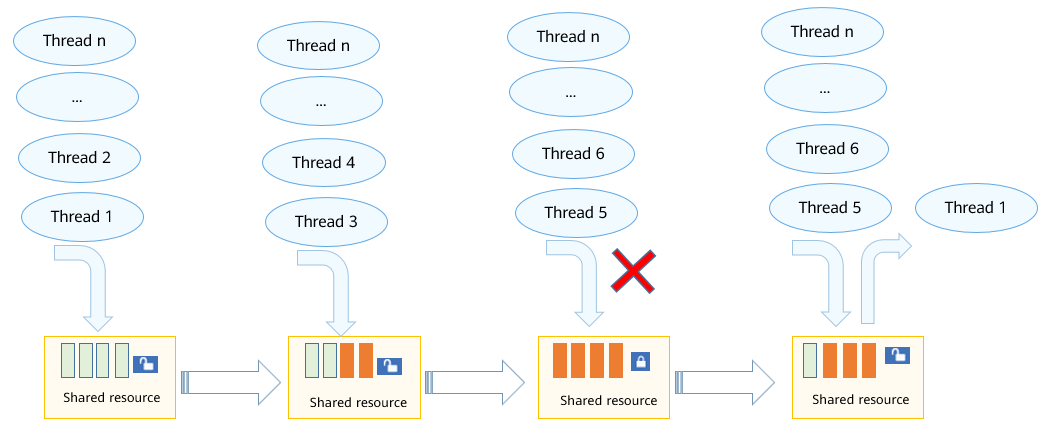Basic Concepts
Semaphore is a mechanism for implementing inter-task communication. It implements synchronization between tasks or exclusive access to shared resources.
In the data structure of a semaphore, there is a value indicating the number of shared resources available. The value can be:
- 0: The semaphore is unavailable. Tasks waiting for the semaphore may exist.
- Positive number: The semaphore is available.
The semaphore for synchronization is different from the semaphore for mutex:
- Semaphore used for exclusive access: The initial semaphore counter value is not 0, indicating the number of shared resources available. The semaphore counter value must be acquired before a shared resource is used, and released after the resource is used. When all shared resources are used, the semaphore counter is reduced to 0 and the tasks that need to obtain the semaphores will be blocked. This ensures exclusive access to shared resources. In addition, when the number of shared resources is 1, a binary semaphore (similar to the mutex mechanism) is recommended.
- Semaphore used for synchronization: The initial semaphore counter value is 0. Task 1 cannot acquire the semaphore and is blocked. Task 1 enters Ready or Running state only when the semaphore is released by task 2. In this way, task synchronization is implemented.
Working Principles
Semaphore control block
/**
* Data structure of the semaphore control block
*/
typedef struct {
UINT16 semStat; /* Semaphore status */
UINT16 semType; /* Semaphore type*/
UINT16 semCount; /* Semaphore count*/
UINT16 semId; /* Semaphore index*/
LOS_DL_LIST semList; /* Mount the task blocked by the semaphore.*/
} LosSemCB;
Working Principles
Semaphore initialization: The system allocates memory for the semaphores configured (you can configure the number of semaphores using the LOSCFG_BASE_IPC_SEM_LIMIT macro), initializes all semaphores to be unused semaphores, and adds them to a linked list for the system to use.
Semaphore creation: The system obtains a semaphore from the linked list of unused semaphores and assigns an initial value to the semaphore.
Semaphore request: If the counter value is greater than 0, the system allocates a semaphore, decreases the value by 1, and returns a success message. Otherwise, the system blocks the task and adds the task to the end of a task queue waiting for semaphores. The wait timeout period can be set.
Semaphore release: When a semaphore is released, if there is no task waiting for it, the counter is increased by 1. Otherwise, the first task in the wait queue is woken up.
Semaphore deletion: The system sets a semaphore in use to unused state and inserts it to the linked list of unused semaphores.
Semaphore allows only a specified number of tasks to access a shared resource at a time. When the number of tasks accessing the resource reaches the limit, other tasks will be blocked until the semaphore is released.
